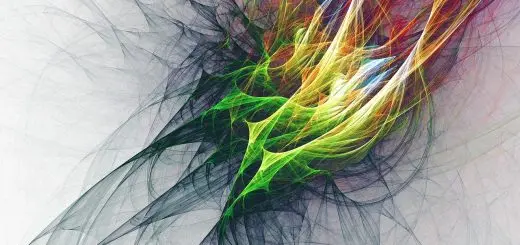The Harp of Dagda: Magical Music in Celtic Myth

Looking for more amazing products? Check out our online store and explore our collection here! Happy shopping!
Before diving in, please note: This post is for informational purposes only. If you’d like to know more about how we approach topics, feel free to check out our friendly Disclaimer Page.
Hey there, amazing readers! 
We’re committed to delivering quality posts, and your support (even just sticking around despite the ads) means everything to us. So, bear with us, and thanks for helping us keep the good vibes rolling. Now, on to the fun stuff!
TRANSLATE BUTTON AT THE END OF THE ARTICLE
Overview
The Harp of Dagda holds a significant place in Celtic mythology, representing the power of music and its magical properties.
This instrument, associated with the god Dagda, has a rich history and is deeply rooted in Celtic culture.
The harp is not only a symbol of beauty and artistry, but it also carries mystical and transformative qualities.
In this article, we will delve into the origins and history of the Harp of Dagda, explore its significance in Celtic mythology, discuss its magical powers, examine the mythical tales featuring the harp, explore its presence in art and symbolism, shed light on rituals and ceremonies involving the harp, discuss its legacy in modern culture, and explore its connection to other Celtic instruments.
Introduction to the Harp of Dagda
The Harp of Dagda, also known as Uaithne, is a legendary instrument in Celtic mythology.
It is said to have been created by the god Dagda, who was known as the father of all gods and possessed immense powers.
The harp is described as a beautifully crafted instrument made from oak and adorned with intricate carvings and precious stones.
With its enchanting sound, the Harp of Dagda is believed to have the ability to affect emotions, heal wounds, and even control the seasons.
Origins and History of the Harp of Dagda
The origins of the Harp of Dagda can be traced back to ancient Celtic societies.
The harp was not only a musical instrument but also a symbol of power and authority.
It held a significant place in Celtic culture, and its history can be found in ancient texts and folklore.
The Harp of Dagda was often associated with bards and druids, who played a crucial role in Celtic society as poets, storytellers, and keepers of knowledge.
These musical traditions were passed down through generations, ensuring the legacy of the Harp of Dagda continued to thrive.
Significance of the Harp in Celtic Mythology
The Harp of Dagda holds immense significance in Celtic mythology, representing the power of music and its ability to influence the natural world.
It is believed that when the harp is played, it can bring about harmony, heal the sick, and even control the elements.
The harp symbolizes the connection between the mortal and divine realms, serving as a bridge between humans and the gods.
In Celtic mythology, music was seen as a divine gift and was often associated with magical and transformative properties.
The Magical Powers of the Harp of Dagda
The Harp of Dagda is renowned for its magical powers.
When played by a skilled musician, it is said to have the ability to evoke a range of emotions, from joy and celebration to sorrow and lamentation.
The harp’s melodies can heal physical and emotional wounds, bringing comfort and relief.
It is also believed that the Harp of Dagda has the power to control the weather, summoning rain, wind, and sunshine.
This magical instrument is seen as a source of inspiration and creativity, capable of stirring the soul and unlocking hidden depths of human emotion.
Mythical Tales Featuring the Harp of Dagda
The Harp of Dagda features prominently in many mythical tales from Celtic folklore.
One such tale recounts how the harp was stolen by the Fomorians, a group of malevolent beings.
Dagda, determined to retrieve his harp, embarked on a heroic quest, eventually winning it back through cunning and bravery.
Another popular myth tells of the harp being used to calm and soothe a tribe plagued by war and discord, bringing about peace and harmony.
These stories highlight the transformative and healing powers of the Harp of Dagda and its ability to restore balance in the world.
The Harp of Dagda in Celtic Art and Symbolism
The Harp of Dagda is a recurring motif in Celtic art and symbolizes the importance of music and artistic expression in Celtic culture.
It can be found depicted on ancient artifacts, such as stone carvings and metalwork.
The harp is often portrayed as a symbol of beauty, grace, and spiritual enlightenment.
It is also associated with the concept of the "three realms," representing the interconnectedness of the land, sea, and sky.
The Harp of Dagda is considered a sacred symbol and continues to inspire contemporary Celtic art and design.
Rituals and Ceremonies Involving the Harp of Dagda
Throughout history, the Harp of Dagda has played a significant role in Celtic rituals and ceremonies.
It was often used during religious ceremonies to invoke the gods and connect with the divine.
The harp’s melodies were believed to carry prayers and offerings to the gods, serving as a conduit between the mortal and spiritual realms.
The Harp of Dagda was also central to celebrations and festivals, where it would be played to bring joy, healing, and good fortune to the community.
These rituals and ceremonies kept the tradition of the Harp of Dagda alive, ensuring its legacy endured.
The Legacy of the Harp of Dagda in Modern Culture
The legacy of the Harp of Dagda continues to thrive in modern culture, particularly in Celtic nations such as Ireland and Scotland.
The harp is a national symbol of Ireland and is featured on its coat of arms, currency, and official documents.
It holds a special place in Irish music, with the harp being the instrument of choice for traditional Irish musicians.
In Scotland, the harp is also revered, and its influence can be seen in Scottish music and storytelling traditions.
The Harp of Dagda serves as a reminder of the rich cultural heritage and the enduring power of music.
The Harp of Dagda: Inspirations for Music and Literature
The Harp of Dagda has inspired countless musicians and writers throughout history.
Its mythical qualities and magical powers have been captured in music and literature, adding to its enduring legacy.
Many composers have composed pieces inspired by the Harp of Dagda, seeking to recreate its enchanting melodies and evoke its transformative powers.
Writers have also been drawn to the harp’s symbolism, incorporating it into their works to represent beauty, harmony, and the connection between the mortal and divine realms.
The Harp of Dagda and its Connection to Other Celtic Instruments
The Harp of Dagda is closely connected to other traditional Celtic instruments, such as the bodhrán, tin whistle, and bagpipes.
These instruments often accompany the harp in traditional Celtic music, creating a rich and vibrant sound that celebrates the culture and heritage of the Celtic people.
The combination of the harp with other instruments allows for a diverse range of melodies and rhythms, capturing the essence of Celtic music and its deep-rooted traditions.
Preserving the Legacy: The Current Status of the Harp of Dagda
In modern times, efforts are being made to preserve the legacy of the Harp of Dagda and ensure its continued presence in Celtic culture.
The harp is taught and studied in music schools, with a focus on maintaining traditional playing techniques and styles.
Organizations dedicated to promoting Celtic music and culture actively support and showcase the Harp of Dagda in concerts and festivals.
Additionally, the harp continues to be a symbol of national identity, reminding people of their rich heritage and the power of music.
Conclusion
The Harp of Dagda stands as a testament to the power of music and its ability to transcend boundaries.
It holds a significant place in Celtic mythology, symbolizing the connection between the mortal and divine realms.
Through its enchanting melodies and transformative powers, the harp has inspired countless tales, rituals, and artistic expressions.
Its legacy continues to thrive in modern culture, with the harp serving as a symbol of national identity and a source of inspiration for musicians and writers alike.
The Harp of Dagda exemplifies the enduring beauty and magic of Celtic mythology, reminding us of the profound impact of music in shaping our world.

The Enlightenment Journey is a remarkable collection of writings authored by a distinguished group of experts in the fields of spirituality, new age, and esoteric knowledge.
This anthology features a diverse assembly of well-experienced authors who bring their profound insights and credible perspectives to the forefront.
Each contributor possesses a wealth of knowledge and wisdom, making them authorities in their respective domains.
Together, they offer readers a transformative journey into the realms of spiritual growth, self-discovery, and esoteric enlightenment.
The Enlightenment Journey is a testament to the collective expertise of these luminaries, providing readers with a rich tapestry of ideas and information to illuminate their spiritual path.
Our Diverse Expertise
While our primary focus is on spirituality and esotericism, we are equally passionate about exploring a wide range of other topics and niches 

To ensure we provide the most accurate and valuable insights, we collaborate with trusted experts in their respective domains 
Our blog originally focused on spirituality and metaphysics, but we’ve since expanded to cover a wide range of niches. Don’t worry—we continue to publish a lot of articles on spirituality! Frequently visit our blog to explore our diverse content and stay tuned for more insightful reads.
Hey there, amazing reader! 
Check out our store here and take a peek at some of our featured products below! Thanks for being awesome!













